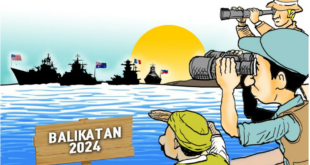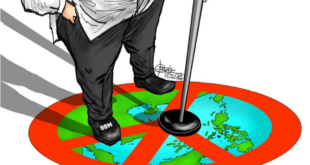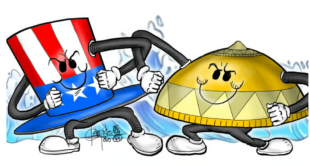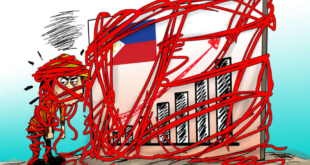IN its strongest response so far to recent provocations by China in the South China Sea, the Philippines moved with dispatch in dismantling the floating barrier put up by the Chinese coast guard in Bajo de Masinloc or Scarborough Shoal.
Last week, divers from the Philippine Coast Guard cut off from their moorings the buoys that held up the barrier as Chinese vessels watched from a distance.
Only when the barrier, deployed every time Filipino fishermen approached the shoal, had been disabled did the Chinese ships move in to collect what was left of it.
Philippine authorities felt that in putting up the barrier, China had crossed the line. The barrier “violates the traditional fishing rights of our fishermen,” National Security Adviser Eduardo Año said, adding that the Philippines “will take all appropriate actions to cause the removal of the barriers and to protect the rights of our fishermen in the area.”
Just hours later, the Philippine Coast Guard announced that on orders of President Ferdinand Marcos Jr., it had removed the obstruction that “posed a hazard to navigation” and was “a clear violation of international law.”
 PHOTO COURTESY OF PHILIPPINE COAST GUARD
PHOTO COURTESY OF PHILIPPINE COAST GUARD
In a feeble attempt at blame-shifting, the Chinese foreign ministry warned the Philippines not to “stir up trouble” and refrain from intruding into Chinese territory.
Defense Secretary Gilbert Teodoro Jr. pushed back, saying the Philippines was merely reacting to China’s aggressive action.
We may have shown up in China in the skirmish over Scarborough, but the protracted sea row is far from over. Beijing’s expansionist ambitions will not be quenched that easily.
The Philippines also has a compelling reason for drawing the line at Scarborough. It is why we went to the arbitral court at The Hague in 2013.
The shoal is well within the country’s exclusive economic zone (EEZ), a 200-nautical mile expanse in the South China Sea, where the Philippines has sovereign rights to fish and extract natural resources.
The shoal had long been open to Chinese and other fishers, but the convenient arrangement ended when Chinese authorities began to drive away foreign fishing boats.
To further fortify its control, China occupied Scarborough and started building structures there.
The Philippines contested the occupation seeking arbitration under the provisions of the UN Convention on the Law of the Sea (Unclos) and challenged Beijing’s “nine-dash line” interpretation of sea borders.
In its 2016 ruling, the arbitral tribunal that had been convened to settle the issue rebuffed China’s claim to practically the entire South China Sea, at the same time handing the Philippines a landmark legal victory.
China has refused to accept the ruling and is even trying to stamp its presence in the disputed waters. Its coast guard has been blockading the entrance to the Ayungin Shoal in the Spratly Islands, where there is a Philippine military outpost. There is also a flotilla of Chinese coast guard, maritime militia ships and fishing boats in the West Philippine Sea, ready to “swarm” Philippine ships that dare to challenge their numbers.
The Philippines has so far refused to be baited into a confrontation, relying instead on diplomatic protests to denounce incidents of Chinese harassment and intimidation and bring them to international attention and concern.
In the case of Scarborough Shoal, the Philippines is right in asserting that the floating barrier be removed. We have the moral and legal high ground, and this is where we draw the line.
Restraint and sobriety, however, continue to guide the Philippines’ foreign policy in the face of China’s aggressive tactics, even as the geopolitical turbulence in the Indo-Pacific continues to swell. The growing interest of the US and other Western powers in the region has only hardened China’s resolve to push back against foreign meddling in the strategically important South China Sea. It will not look kindly at the Philippines strengthening its alliances with the West.
A 2017 paper by the Geneva Graduate Institute noted that “Southeast Asian nations’ protracted struggles for independence, combined with Cold War geopolitics, made maritime border delimitation a complex mix of cooperation and conflict. Great power politics remain the main drivers of tensions until this day.”
The situation has hardly changed since.
*****
Credit belongs to : www.manilatimes.net
 Atin Ito First Filipino Community Newspaper in Ontario
Atin Ito First Filipino Community Newspaper in Ontario






